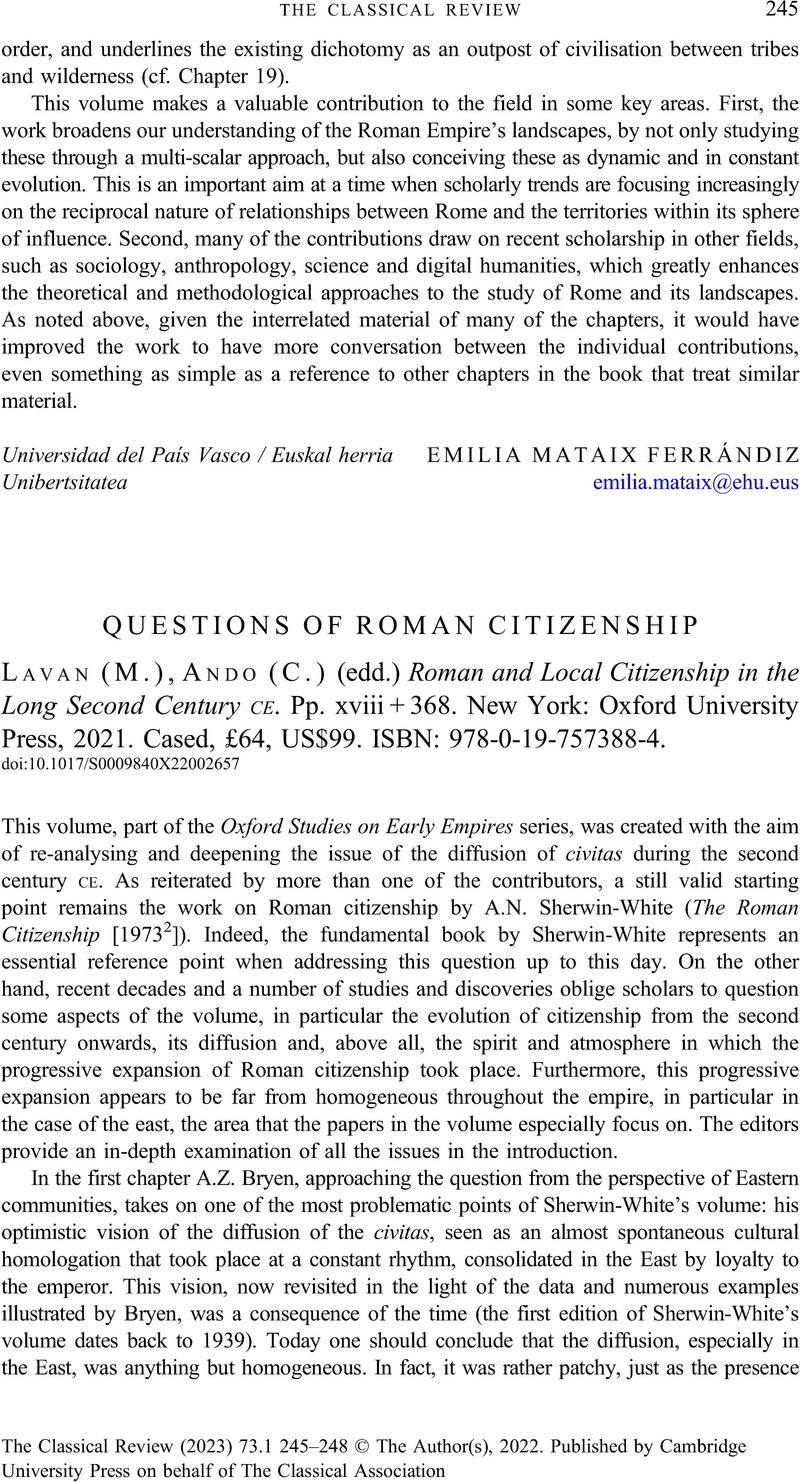No CrossRef data available.
Article contents
QUESTIONS OF ROMAN CITIZENSHIP - (M.) Lavan, (C.) Ando (edd.) Roman and Local Citizenship in the Long Second Century ce. Pp. xviii + 368. New York: Oxford University Press, 2021. Cased, £64, US$99. ISBN: 978-0-19-757388-4.
Review products
Published online by Cambridge University Press: 23 November 2022
Abstract

- Type
- Reviews
- Information
- Copyright
- Copyright © The Author(s), 2022. Published by Cambridge University Press on behalf of The Classical Association



